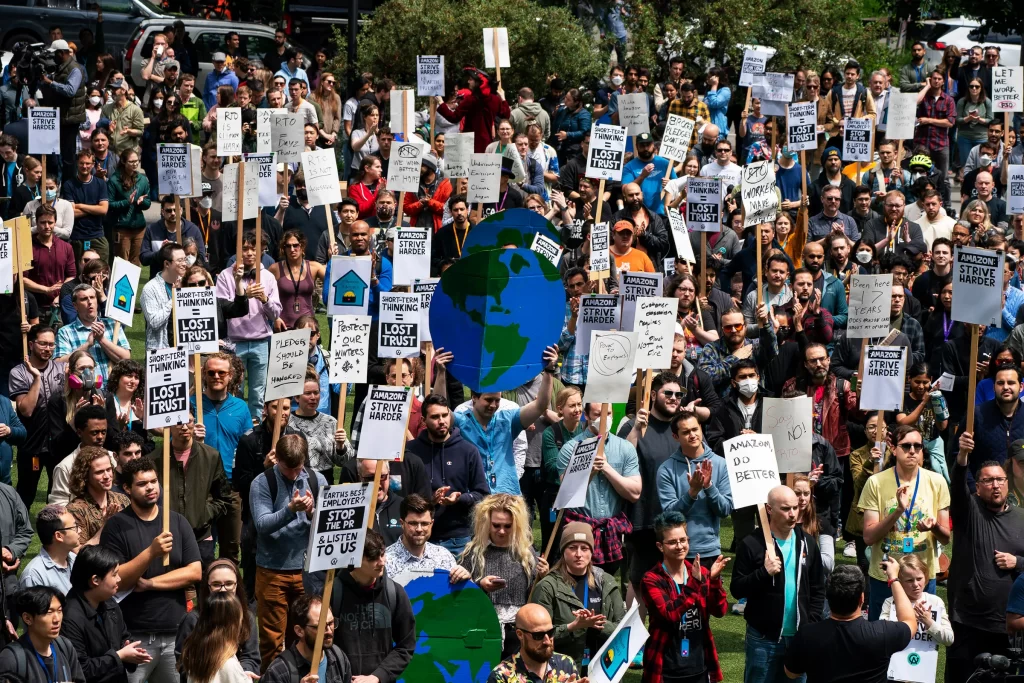This article has been updated since it was first published
Amazon workers across the globe staged a walkout on Wednesday, protesting against the company’s recent return-to-office mandate, layoffs, and environmental record. Organizers say that approximately 2,000 employees, with around 1,000 of them gathering outside Amazon’s Seattle headquarters, participated in the organized walkout. Amazon has since responded to this and stated that there were around 300 workers who participated in the walkout in Seattle. The protest was primarily orchestrated by Amazon Employees for Climate Justice, a prominent worker organization advocating for the company to address its climate stance.
The key reason cited by the employee group for the walkout was a “lack of trust in company leadership’s decision-making.” Amazon recently implemented its largest round of layoffs in its history, cutting 27,000 jobs across various divisions. In addition, the company ordered corporate employees to return to the office at least three days a week, signaling an end to the remote work arrangements established during the pandemic.

During the walkout, employees displayed signs with messages like “Amazon strive harder” and “Earth’s best employer? Stop the PR and listen to us.” They shared personal stories, highlighting the benefits of remote work, such as spending more time with family or caring for newborn children and relatives with special needs.
The walkout coincided with a critical time for Amazon, as the company completed its employee cuts and continues to navigate a challenging economic environment with slowing retail sales. Concerns among employees have grown about the potential for further layoffs.
The return-to-office mandate sparked backlash among employees, leading to the creation of a group called Remote Advocacy on the internal Slack channel. Workers who moved during the pandemic or were hired for remote roles expressed worries about how the policy would impact them.
Amazon defended its return-to-office push, citing increased energy, collaboration, and connections among employees. The company emphasized that individual managers would determine the working arrangements that best suited their teams.

In addition to the return-to-office issue, the walkout drew attention to concerns regarding Amazon’s failure to meet its climate commitments. Employees criticized the company’s carbon emissions, which increased by 40% in 2021 compared to 2019. They also highlighted a report that accused Amazon of undercounting its carbon footprint.
The assertions were refuted by Amazon, which insisted that it adheres to the Greenhouse Gas Protocol Corporate Accounting and Reporting Standard. By 2040, the corporation wants to have net-zero carbon emissions, and by 2025, it wants to be using only renewable energy.
Employees used the walkout as a forum to express their concerns and demand more accountability and transparency from Amazon’s management. The challenge today for the business is to deal with these problems and win back the confidence of its employees.
Update: After this article was published, we were contacted by Amazon staff to verify the actual number of people who participated in the walkout. According to Amazon, approximately 300 people were present at the demonstration in Seattle, while 1600 workers had pledged to participate worldwide.


